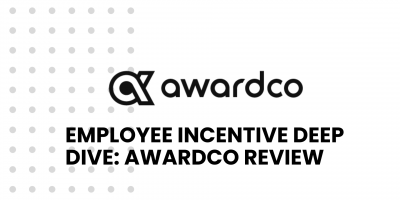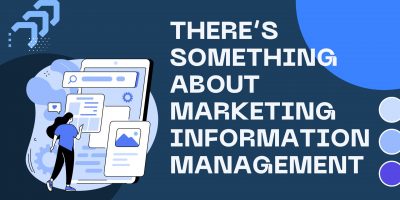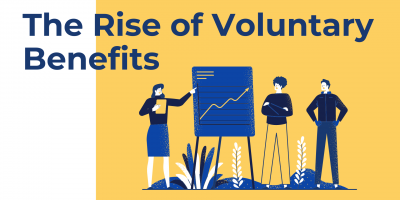
How to Design an Effective Employee Incentive Plan
Are traditional financial rewards enough to motivate your team, or could the secret to unlocking peak performance lie in understanding the deeper, social value of non-cash incentives?


Founder of Breadnbeyond
These past couple of years have been challenging, to say the least. Between a growing trend of resignations, employee discontent, and the post-pandemic phenomenon of quiet quitting, the workplace has significantly changed.
The power balance shifted towards the employee, creating new opportunities and even more risks. Now, effective HR risk management is more necessary than ever.
As an HR-specific issue, ineffective recruitment should be at the forefront of human resources management strategies. Failing to recognize it as a significant pain point can seriously threaten the prosperity of a company. In fact, the cost of a bad hire can go as high as $240,000 in expenses related to employment, retention, and pay.
That’s a high price to pay for an avertible liability.
Founder of Breadnbeyond Andre Oentoro describes it as a “cause-and-effect relationship.”
Oentoro explains: “When an organization does not have good recruitment practices in place, it exposes itself to greater risk. Not only does this put the company at a competitive disadvantage, but it can also lead to compliance issues and legal problems.”
Thus, in this Shortlister article, we explore HR risk management in depth to find its correlation with ineffective recruitment and help companies tackle this and other risk-related challenges in the workplace.

As a fundamental part of every organization, the HR department has many responsibilities to ensure a solid organizational structure, one of which is handling risks.
So, how can HR help with risk management strategy?
Financial risk evaluation, anticipating challenges, and identifying actions to reduce their impact broadly defines risk management for businesses. However, adding human resources into this equation gives it another dimension that puts employees as the main threat.
In that sense, HR risk management is evaluating and assessing the risk workers pose to the organization. It’s a specific responsibility that addresses threats emerging from ineffective employee lifecycle management. This includes:
By identifying potential workforce liabilities, HR professionals can mitigate their effect on the company.
Consequently, they can set up individual or coordinated solutions for all employees, management levels, and leadership.
HR risk management is defined as the process of identifying, assessing, and mitigating risks that are posed by employees to the organization.
While it may sound simple, navigating the landscape of human capital risk management can seem challenging without a clear understanding of the potential pitfalls.
So, what are the risks in the HR department?
To shed light on this, we’ve outlined several HR risk management examples that managers should be vigilant about:
In conclusion, these highlighted human resource risk examples underscore the multifaceted nature of HR risk management.
Primarily, the role of HR in risk management is to handle human-caused challenges in the workplace. That includes anything from employee shortages to bad hires or poor employee performance.
But it’s also HR’s responsibility to promote positive behavior.
Positive employee reinforcement can be an excellent preventative strategy. For example, companies can provide career improvement opportunities or reward good performance. In return, employees will be more engaged and satisfied with their jobs.
In fact, a Harvard Business Review report on The Impact of Employee Engagement on Performance reveals that, for 72% of employees, performance recognition can significantly impact their engagement. Ultimately, for every positive deed a company does for its employees, they will most likely return the favor.
That’s why HR has a double role in managing risk in the workplace. One is to closely follow employees’ work on all organizational levels and promptly handle potential liabilities. But, now more than ever, its role is to also encourage optimistic outcomes that will mitigate risks in the long term.
Technology, with its innovative tools and systems, has revolutionized how organizations identify, assess, and address HR-related risks.
Advanced software and analytics, integrated into HR risk management solutions, allow companies to track employee behavior patterns, monitor compliance with regulations, and even predict potential issues.
With sophisticated HR management systems, real-time data can be collected and analyzed, giving HR departments unparalleled insights into potential liabilities.
There are a number of specific tools and software that can be used to identify and mitigate risks, including:
Furthermore, technology-driven HR risk management training ensures that HR professionals are equipped with the necessary skills to navigate these complexities.
This digital transformation not only streamlines risk identification and assessment but also aids in fostering transparent communication, which enhances employee engagement, reduces misunderstandings, and prevents conflicts.
By leveraging technology’s capabilities, organizations can navigate the evolving landscape of HR risk management with greater precision, ensuring a secure and harmonious work environment.
Saying people are a risk factor applies to leadership just as much as it does to employees.
After all, a lousy manager is a significant liability to the company’s progress. One bad employee can undoubtedly hurt a business, but a bad manager can damage the entire workflow by decreasing team motivation, productivity, and morale.
In fact, according to an employee survey by GoodHire, eight out of ten workers would consider quitting their job because of a bad manager.
Another study by the American Psychological Association reveals that, for 75% of employees, their boss causes the most stress at work. As a result, poor leadership and the chronic stress it creates can cost companies over $300 billion annually and 105 million lost working days.
In contrast, a study on The Impact of Organizational Factors on Psychological Needs and Their Relations with Well-Being found that workers who feel supported by leadership tend to be happier at work.
As the data shows, managing risk strategies should also regard leadership-caused threats to the organization.
In that sense, the HR department is responsible for the following:

Changes always bring a sense of uncertainty. However, what happened in the past few years brought up unseen workplace issues for companies.
As employee priorities shifted, they influenced the critical risk areas for HR managers.
Health and benefits provider Mercer pinpoints five distinct categories with liabilities that human resources should keep an eye on, especially post-pandemic.
Inefficient recruitment is a complex issue with many causes. As such, many factors can influence it, including:
One or more of these points contribute to a bad hire, posing a significant risk to long-term organizational growth.
As Breadnbeyond’s CEO, Andre Oentoro, explains:

Risk is different for all industries, organizations, and even departments within a company. Hence, risk management in the workplace can take many forms. Ultimately, it all comes down to unique company goals and challenges, creating the need for dozens of different human resource management strategies.
In that regard, human resource is just one of many aspects of mitigating risk. Other common examples of risk management in the workplace include:
Depending on the industry, be it manufacturing, retail, or finance, the company should conduct an analysis before launching a new product or service. That helps determine if the benefits outweigh the potential risks and create a strategy around them.
After launching the product or service, companies should also calculate the market risk or its likely value change in the future.
This type of threat is unanimous to every organization. Unlike HR, which emphasizes employee-caused threats and solutions, compliance risk management monitors all existing organizational processes, which includes people, procedures, and technologies.
Safety risk management is crucial for locating potential hazards and controlling their effect on the organization. There are three types of risk: acceptable, tolerable, or intolerable. Using the appropriate strategy for each ensures the well-being of a business.
These strategies include analyzing and maintaining potential safety hazards, like regularly checking technology or human errors.
With the rise of technologies and the digitalization of most business procedures, data theft has become a genuine problem. Stealing valuable assets like documents and emails can put the business at risk, making cybersecurity a crucial part of handling risk.
When employers don’t have the means to deal with a potential risk independently, they delegate this responsibility to third parties. These could include anything from outsourcing HR compliance companies to setting up cybersecurity systems. Most of the risk then falls on these third-party providers.
Much like other examples of risk management, employee-related risks require a specific approach. HR risk management strategies are a structured way of addressing such threats.
There could be as many different techniques as there are risks.
But, to simplify the process, human resource specialists can set up and follow an HR risk management plan. Usually, it consists of cyclical measures that aim to identify, assess, manage, and monitor the risks and their effects.
Making a plan is a central element of the risk management process. It helps HR document the whole process and usually consists of the following steps:
The first step in any risk management strategy should be identifying the key risks. For HR, an effective way to do this would be to perform a risk assessment audit. Doing this could expose what’s good, bad, or lacking within the organization. As a result, human resources will be able to prioritize solutions for the most harmful liabilities.
Next is evaluating the results. Many risks can surface with the HR risk assessment audit, and tackling all of them at the same time is simply unrealistic. HR needs to assess and prioritize by ranking the potential threats based on their severity and urgency. An HR risk assessment template can provide a structured framework for this evaluation process.
Once the list of priorities is complete, it’s time to focus on designing a strategy and implementing it. Some of the strategies include:
How successful this third step is depends on the quality and ability of the HR department.
Once everything is set in place, the human resources department should monitor the developments. Since it’s a recurring process, the results are the best indicator of what works and what can be improved in the HR risk management strategy.

An HR audit reviews the organization’s policies, documentation, and procedures to identify potential liabilities.
Seeing how fast-paced the work environment is, HR must keep up with the changes. That means performing regular audits to ensure legal compliance and alignment with the company’s objectives.
The process focuses on HR operations like recruitment, onboarding, employee retention, payroll, compensations, performance management, etc.
Some of the different audit types are:
After determining the focus point, goals, and who will perform the audit, the next step would be gathering data. For a recruitment audit, that usually means data from the applicant tracking system (ATS) or surveys of current employees.
Next would be to analyze the audit findings and identify the pain points. That helps HR plan better recruitment and other strategies, stay compliant, and avoid potential risks.
To go over every possible HR risk management solution would be futile since there’s no overarching approach to this matter. However, some aspects are somewhat universal for the human resources department.
Some of these include following safety protocols or providing good employee conditions. However, HR also needs to:
In essence, HR risk management solutions demand a proactive and comprehensive approach.
Hiring employees without a plan is a costly mistake for companies. HR should focus on the following aspects to avoid the risk of a potential bad hire.
Establishing a recruitment and hiring plan should alleviate the risk of hiring under pressure. After all, making rush decisions can easily lead to hiring an unfit candidate.
According to Oentoro, effective recruitment practices can help to reduce the risks associated with HR.
“A well-run recruitment process will attract high-quality candidates who are more likely to be a good fit for the company. That’s where companies get a good reputation and positive company culture.”
Long recruitment is harmful to the company for several reasons. The main one is that the more a job position remains vacant, the more it costs the business.
Moreover, candidates can lose interest resulting in missing out on qualified employees.
In fact, recruiting statistics show that the average length of the hiring process is 36 days. At the same time, the top candidates are off the market in 10 days.
Businesses with a well-established company culture should take into account more than the qualifications and experience of a job candidate. The person they hire should also be a cultural fit and share the values and objectives of the organization. Failing to do this could lead to undesired behavior in the workplace.
In this case, it’s always good to include more people in the hiring process, like a manager or a team leader. That way, they can identify possible warning signs that others might overlook.
It’s common for an employee to exaggerate their experience or skill proficiency. To rule out potentially underqualified candidates, HR can test for job skills in the earlier stages of recruitment.

Risk is as inevitable as the next big change in the workplace is.
However, with the most recent geopolitical disruptions and record inflation, it’s safe to assume that business risk is rising. To keep it contained and predictable, the human resources department must keep pace with the changes.
Effective recruitment is one part of the solution.
Thus, moving forward, a significant focus for employers should be on having a sturdy recruitment strategy in place. That way, they remove the overall risks in the workplace, providing for more effective HR risk management.
Senior Content Writer at Shortlister
Browse our curated list of vendors to find the best solution for your needs.
Subscribe to our newsletter for the latest trends, expert tips, and workplace insights!

Are traditional financial rewards enough to motivate your team, or could the secret to unlocking peak performance lie in understanding the deeper, social value of non-cash incentives?

As the majority of the workforce remains disengaged, enhancing employee recognition through incentive platforms like Awardco emerges as a solution.

Revolutionize your marketing strategy with the power of marketing information management. Explore key components, data types, and real-world examples from industry leaders.

As employee priorities and needs shift, the importance of voluntary benefits in the workplace is increasing.
Used by most of the top employee benefits consultants in the US, Shortlister is where you can find, research and select HR and benefits vendors for your clients.
Shortlister helps you reach your ideal prospects. Claim your free account to control your message and receive employer, consultant and health plan leads.